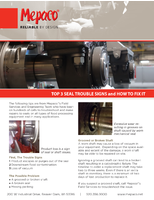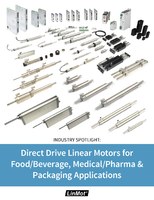MHI and Nippon Steel Announce Joint Technological Development for Container Ship Construction
Tokyo, Japan, Sept. 27, 2006 - Mitsubishi Heavy Industries, Ltd. (MHI) and Nippon Steel Corporation have jointly developed a technology to use higher tensile strength steel* (HTSS) with yield stress of 47 kgf/mm2 for the longitudinal strength member of supersized containerships. This is the world's first application of the 47 kgf/mm2 HTSS in a container ship. The longitudinal strength member is the most important part of a container ship's hull.
New container ships are increasing in size in a move toward transport efficiency. Accordingly, the steel plates used for larger ships are also becoming thicker. However, when plates become thicker, toughness* tends to decline. Use of the new HTSS, which has successfully achieved toughness in addition to increased strength and reduced thickness, will not only contribute to improvements in weight reduction and fuel efficiency, but also increase the reliability of the ship's hull.
The container ship will be built at MHI's Nagasaki Shipyard and Machinery Works while the HTSS steel plate will be produced at Nippon Steel's Oita Works. The ship will see the fruit of the state-of-the-art technologies of the two companies, whose contributions to raising the performance of the ship and enhancing the safety of ship's hull are expected to continue.
The 47 kgf/mm2 HTSS is the world's highest strength steel plate for the hull of commercial ships. In addition to improved hull safety with higher toughness steel, the reduced volume of steel and resultant lighter ship weight will allow greater deadweight. Currently, the highest strength steel plate being used for commercial ships is 40 kgf/mm2 HTSS, introduced fifteen years ago. In general, an increase in the thickness of a plate and the enhancement of strength are accompanied by reduced toughness, however, Nippon Steel's special production technology has enabled simultaneous achievement of both strength and toughness.
Nippon Steel has developed the new HTSS by applying its Thermo-Mechanical Control Process (TMCP) technology, a production process that concurrently enhances strength, toughness and weldability of steel through hot rolling and online water-cooling. The company has verified the outstanding safety of the steel through evaluation and detailed testing very similar to actual hull structure by using a test facility with giant tensile capacity of 8,000 tons. Nippon Kaiji Kyokai (Class NK) also participated in the development. MHI designed the hull structure, leveraging characteristics of the steel and realizing increased safety for the hull structure through optimization such as reduced plate thickness, and steel and welding arrangement.
In general, weldability deteriorates in relation to increasing strength. One of the features of the new HTSS is excellent weldability* equivalent to 40 kgf/mm2 HTSS. MHI has established the most suitable welding method for the new HTSS by conducting various welding tests, including two-electrode VEGA® (Vibratory Electro Gas Arc) welding, jointly developed by MHI, Nippon Steel Corporation and Nippon Steel & Sumikin Welding Co., Ltd. By applying this welding method, it is evident that the resulting product is superior in strength, toughness and the quality of welded parts over existing HTSS.
With the introduction of large-size container ships that combine highly reliable 47 kgf/mm2 HTSS and MHI's special design and construction methods, the company responds to the increasing needs of customers for higher transportation efficiency and reduced environmental load through improved fuel efficiency and enhanced safety of ship's hull.
Nippon Steel will strengthen its ability to respond to needs for higher safety by applying this newly acquired technology to industries other than shipping and continue to contribute to increased safety of ship's hull through the production of the newly developed HTSS.
Notes:
1. Higher tensile strength steel (HTSS) are steel plates with high yield stress, in contrast to mild steel. Yield stress indicates the limit beyond which permanent deformation occurs.
2. When toughness is high, the possibility of crack initiation will be reduced and resistance to crack propagation increases.
3. The two-electrode VEGA® (Vibratory Electro Gas Arc) welding is a high-efficiency auto-welding method.
About Mitsubishi Heavy Industries, Ltd.
Mitsubishi Heavy Industries, Ltd. (TSE: 7011, 'MHI'), headquartered in Tokyo, Japan, is one of the world's leading heavy machinery manufacturers, with consolidated sales of 2,792 billion yen in fiscal 2005 (year ended March 31, 2006). MHI's diverse lineup of products and services encompasses shipbuilding, power plants, chemical plants, environmental equipment, steel structures, industrial and general machinery, aircraft, space rocketry and air-conditioning systems. For more information, please visit the MHI website at www.mhi.co.jp
For further information, please visit the Mitsubishi Heavy Industries, Ltd. home page at: www.mhi.co.jp/indexe.html




